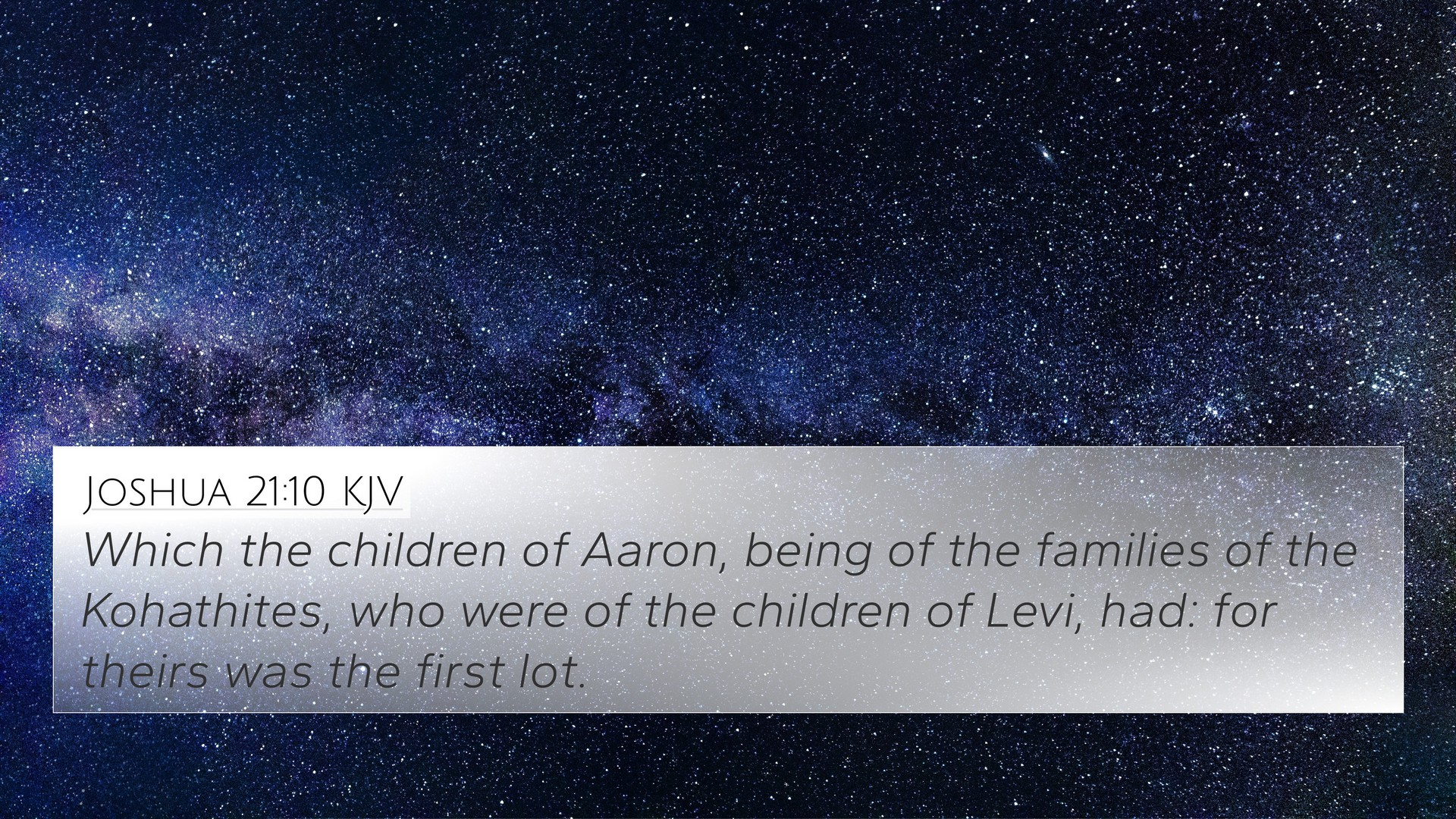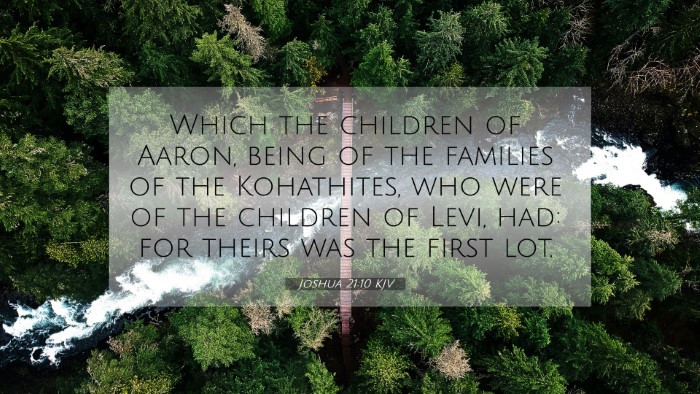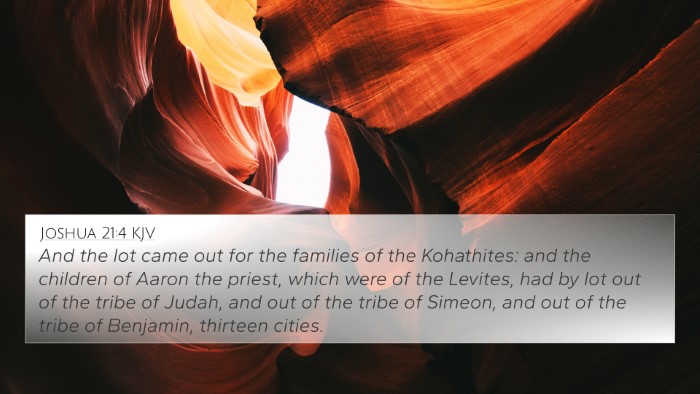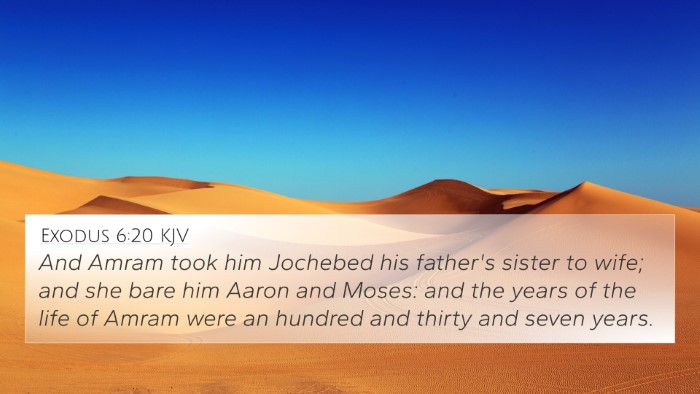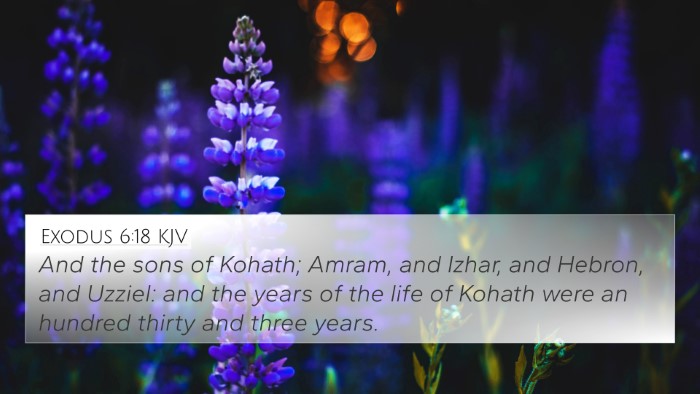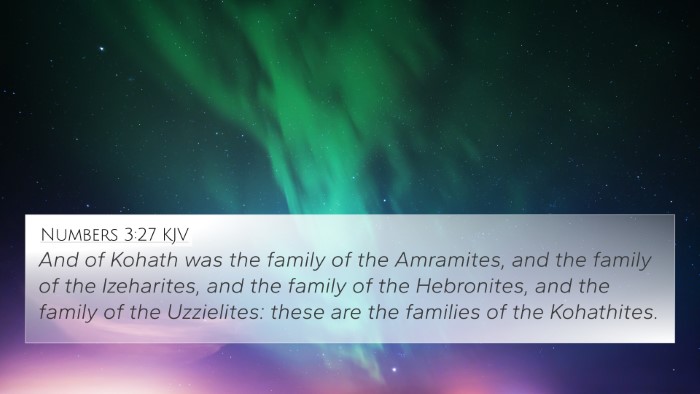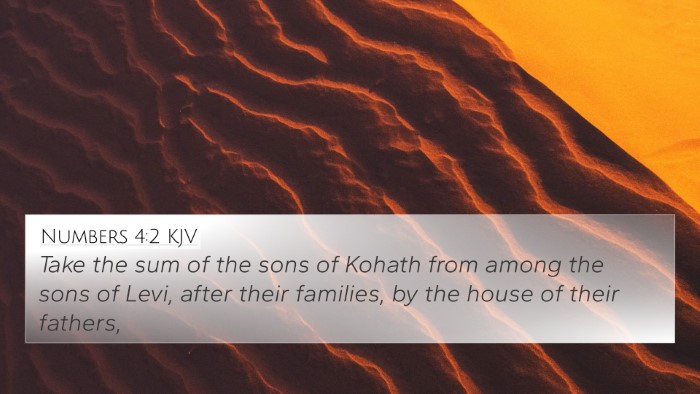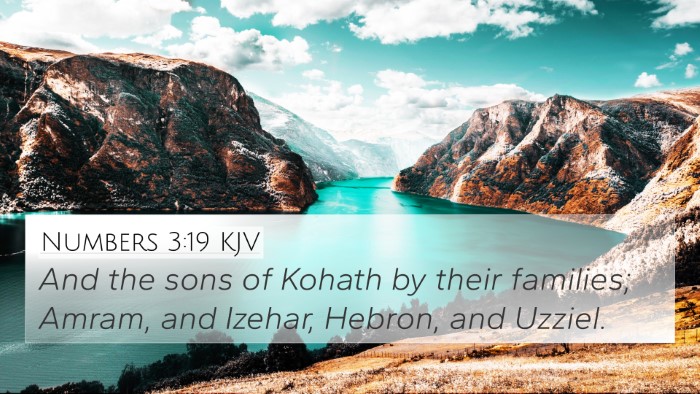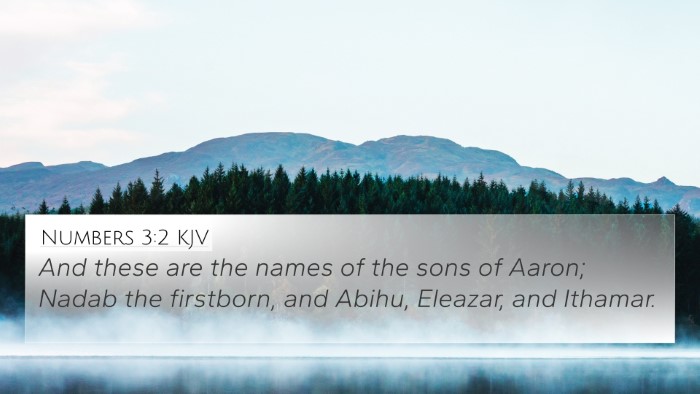Understanding Joshua 21:10
Joshua 21:10 states: "Which the children of Aaron, being of the families of the Levites, took for their lot out of the tribe of Judah, and out of the tribe of Simeon, and out of the tribe of Benjamin," This verse plays a significant role in detailing the allocation of cities to the Levites, specifically the families of Aaron, amidst the various tribes of Israel.
Summary of the Verse
This verse is an important aspect of the broader context of the inheritance distribution among the tribes of Israel. The Levites, set apart for spiritual service, were given cities within the territories of other tribes rather than land of their own, emphasizing their unique role in the community.
Commentary Insights
Matthew Henry's Commentary
Matthew Henry notes that this verse illustrates God’s provision for the Levites. Their inheritance was not based on land ownership but on their service to God and the community. The selection of cities highlights the importance of the priestly family in maintaining religious practices among the Israelites.
Albert Barnes' Commentary
Albert Barnes emphasizes that the choice of cities for the Levites from the tribes of Judah, Simeon, and Benjamin signifies their role as mediators of God’s just laws and worship. By living among the people, the Levites could more effectively carry out their duties, serving as a religious presence throughout Israel.
Adam Clarke's Commentary
Adam Clarke directs attention to the social and religious implications of the Levites' inheritance. He observes that their lack of a separate land allocation reflects their full-time dedication to service. Moreover, it signifies the integration of worship across the tribes, fostering a unified spiritual identity.
Cross-References
Several scriptures interlink with Joshua 21:10, providing further understanding of the Levites' roles and the concept of inheritance in Israel. Here are notable cross-references:
- Numbers 18:20-24: Discusses the provisions for the Levites and their service duties.
- Deuteronomy 10:9: Refers to the Levites' lack of inheritance while emphasizing their dedication to God's work.
- Hebrews 7:5: Highlights the priestly order of the Levites and their relationship to tithes.
- 1 Chronicles 6:54-81: Gives detailed accounts of the cities assigned to the Levites connecting back to their biblical heritage.
- Leviticus 25:32: Discusses the significance of the Levites compared to other tribes in terms of land ownership.
- 2 Chronicles 11:14: Illustrates the importance of the Levite role during the division of Israel’s kingdom.
- Malachi 2:7: Mentions the role of priests, further tying to the vocation of Levites.
Thematic Connections
The thematic connections in the Bible reveal layers of meanings related to Joshua 21:10. Within the canon, the interplay between land, service, and God’s covenant with His people stands out:
- Divine Provision: The assignment of cities emphasizes how God provides for those dedicated to His service.
- Community Integration: The Levites are seen as a bridge between God and the Israelites, fostering community ties through worship.
- Faithfulness and Service: The Levites' commitment reflects a broader biblical theme of how faithfulness to God's calling benefits the community.
Conclusion
Joshua 21:10 serves as a vital link in understanding the role of the Levites, the nature of their inheritance, and how these themes resonate throughout both the Old and New Testaments. By engaging in cross-referencing, one can deepen their understanding of scripture and the connections between various biblical texts.
SEO Keywords Utilization
Utilizing the primary, secondary, long-tail, and user intent keywords mentioned, one can explore:
- Bible verse cross-references: Understanding the connections illuminated in Jesse 21:10.
- Bible concordance: The role of Levites in both Testaments.
- How do [two specific Bible verses] connect: Exploring cross-references between Joshua and Numbers.
Such exploration aids in the comparative Bible verse analysis and enhances one's Bible study through scriptural cross-referencing.
